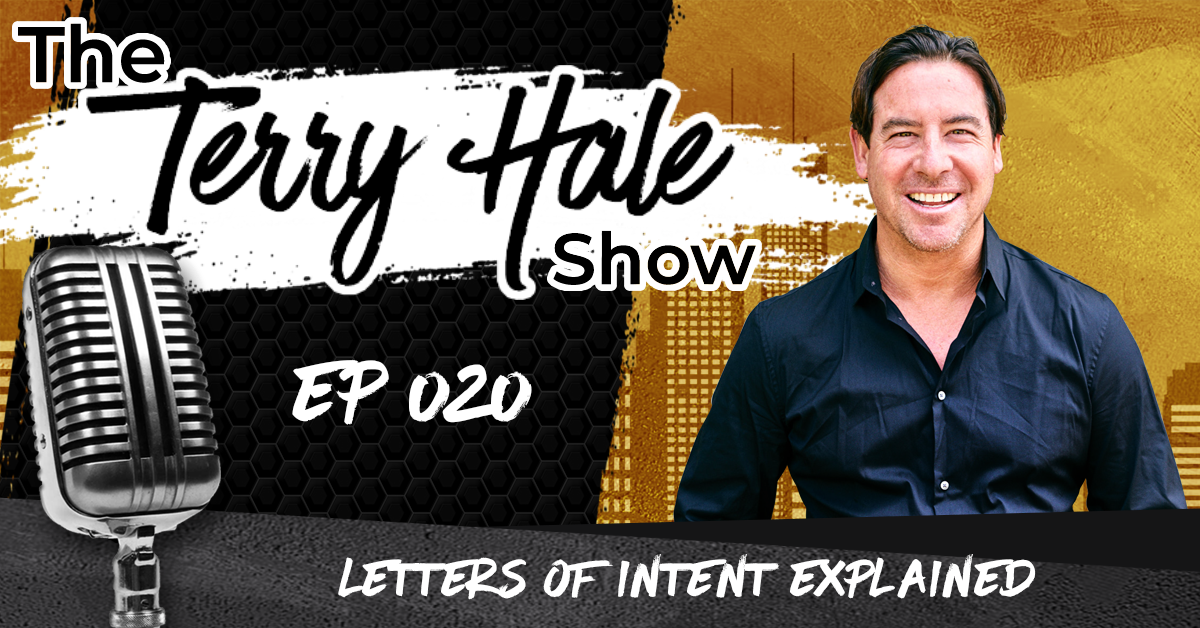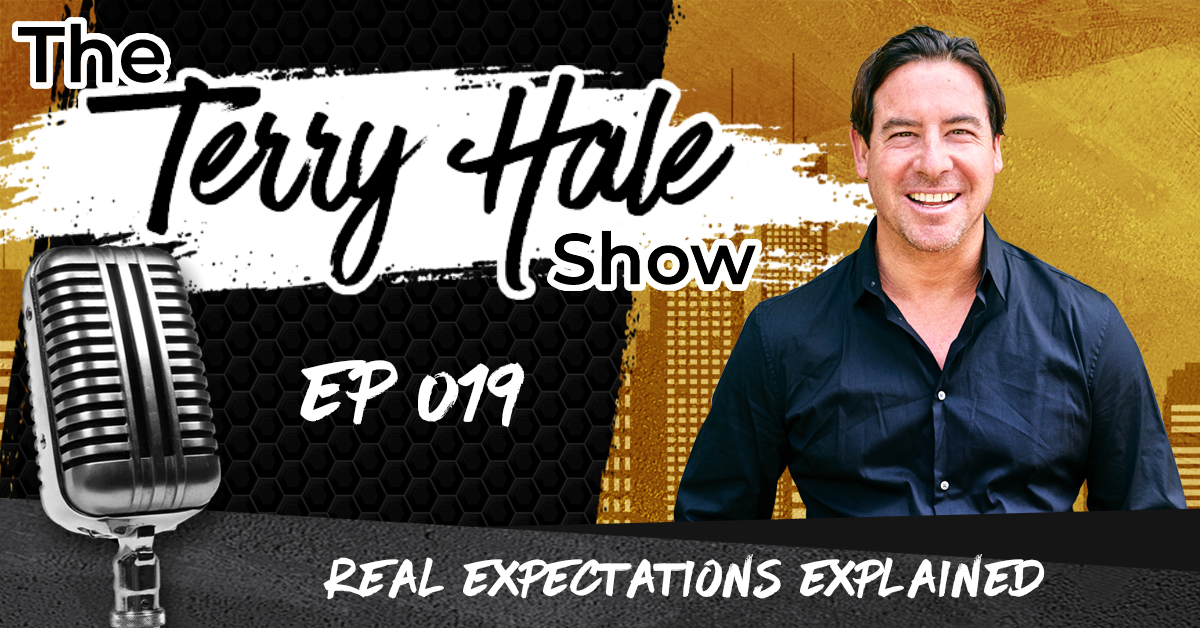Archive for July 2019
The Terry Hale Show Episode 20
Letters of Intent Explained
TRANSCRIPTION
Hey, this is Terry Hale. Really good question, why do we use letters of intent?
In the residential house buying business, if you’re doing that,
You go out there and you find a project, and maybe it’s a distressed seller,
Or you can get it for the right price, maybe someone’s just super motivated to sell
Not so much distressed, whatever the case, right? What you do is you move it forward
And then you put it under contract. You put it under contract,
And then you can either wholesale it, you can get a transactional funding and close it.
Or you bring in your own capital, and then you close it, and then you rehab it,
And then you sell it. The level of insanity who that is,
You’re only as good as your next deal. And you keep doing it over and over again.
And it’s a quicker moving dynamic commercial takes a minute,
Because what you’re doing is you’re going back and forth.
You’re carving out the right details. You’re creating generational wealth and passive income.
So you want to make sure that you dial it in right.
You want to make sure that you can go back and forth and negotiate a little bit.
So the way we did, typically is we don’t go direct to contract, we slow it down.
We have a meeting of the minds. We find it. We pre screen it. We evaluate it.
We structure our terms in our head, what we want to do, and then comes the power of negotiation.
We jump on the phone. And we have a meeting of the minds with the seller, note, not the broker.
Negotiations are never made with brokers are always made with sellers,
Brokers are there to present offers. And so you know, all brokers, all agents,
They have a judiciary duty to present all offers. That’s why we’re able to make these low-ball offers,
And they still have to present them. But you have to make sure that you use some techniques
And dangle the carrot, make sure that you’re a relationship builder,
and you want to do more business with them to entice them to want to do business with you.
All right. But back to the letter of intent. The reason why we use it is because
It’s a meeting of the minds we have that negotiation, then we process that information
Onto a one-page LOI. LOI stands for Letter of Intent.
Then they have an opportunity to digest the letter of intent. Look it over, talk about it.
And then from there, if they want to do business with us, they sign the letter of intent
Or we go back and forth and tighten up the negotiation.
So Letters of Intent are extremely useful tools.
I’ve mastered the craft of putting those together so they produce results.
And I look forward to having you join my team, so I can give you a dozen of them.
All right. To learn more strategies and techniques, visit terryhale.com
Or go ahead and click the link in this video description.
And I look forward to engaging with you real soon.
The Terry Hale Show Episode 19
Real Expectations Explained
TRANSCRIPTION
Hey, this is Terry Hale, want to take a quick minute here,
I got off the phone with a client of mine. And we were talking about expectations,
Like what could they really expect as far as results because
I’m a very result-driven person. And so is my new client, Aaron.
So this is what went down, I told Aaron and I said,
“Look man, you just need to concentrate on the aspect of locating the right project.
Once you find the right deal, then you have to pre-screen it.
You got to go through the standard protocol to determine
If we can set up multiple exit strategies. Once that all happens, it takes about a week.
And then when you determine that it’s a real deal, we put it under contract.”
Typically, we go under contract within 10 days of an executed letter of intent.
And then from that letter of intent, we got a contract.
From contract we have anywhere from 30 to 90 day due diligence.
So as you can see, the timeline starts wrapping up, right?
It starts going up there. So 90 day due diligence max, typically, it’s 45 to 60.
And then we have time allocated for closing. So we can wrap it up
With a full seller finance note in as little as 10 days of closing.
Or, if we’re going to be bringing in additional private capital and doing a full takeout
To buy the low price point, then that could be around 30 days on closing.
So if you add up all those timelines, the realistic results that I told Aaron,
And then I’d like to share with you is, do a deal every hundred and eighty days.
That means two deals a year. That’s all you need to focus on.
And it only takes one to create yourself monthly passive income to set you up for life.
I mean, if you’re like a client of mine that just closed his project four weeks ago,
And when Terryn closes project, it went literally from day one to five weeks later.
Under contract moving it forward.
And now he’s got over $725,000 equity locked in the walls on that deal,
But he’s getting monthly passive income. And you can do this business,
You can set it up, just concentrate on two deals a year. I mean, one deal,
You can be one and done. But if you want to create a portfolio,
Continuously take the action, do two deals a year. All the rest of the time,
Spend time with your family, spend time with your friends.
Do what it is that makes you happy because life is so dang short.
You got to enjoy life and live life in abundance.
Commercial real estate allows you the benefit of, stop selling your time for money
And start concentrating on the good life. Go get a suntan.
Have a good time. That’s what it’s all about. To learn more strategies and techniques,
Visit terryhale.com or go ahead and click the link in this video description.
And I look forward to engaging with you real soon.

